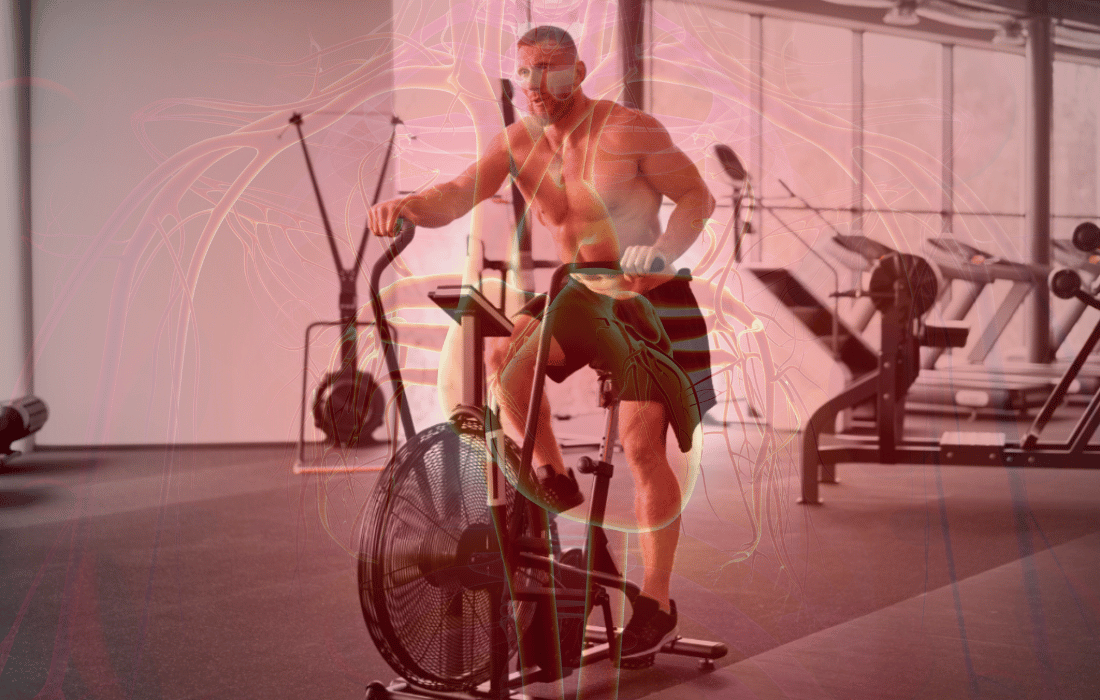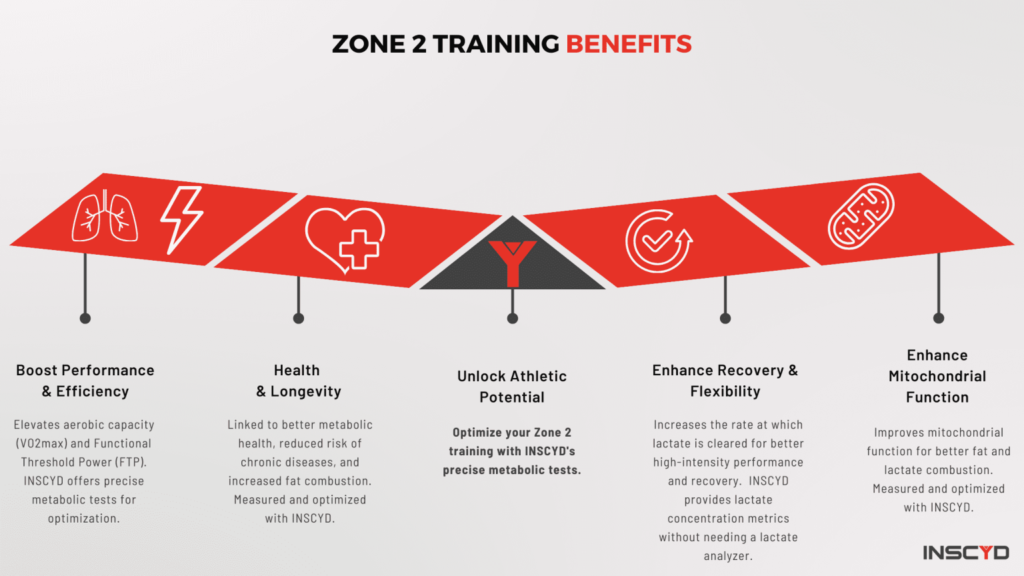Zone 2 training is one of the most underutilized yet crucial components of any fitness regimen. Often referred to as the “fat-burning zone,” Zone 2 cardio bridges the gap between low-intensity recovery and high-intensity efforts, offering profound physiological benefits. For athletes and non-athletes alike, it’s a cornerstone for improving endurance, optimizing metabolic health, and maintaining long-term fitness.
This moderate-intensity exercise targets your body’s aerobic system, enhancing your ability to use fat as fuel and creating an efficient metabolic environment. By training in Zone 2—typically at 60–70% of your maximum heart rate—you build a foundation of fitness that supports not only peak athletic performance but also general health and longevity.
This article dives deep into the science, application, and benefits of Zone 2 training, drawing insights from leading researchers like Peter Attia, Craig Neal, and San-Millán. With evidence from studies on training intensity distribution, mitochondrial health, and endurance performance, we’ll explore why Zone 2 cardio is essential for everyone.
Understanding Zone 2 Training
Zone 2 cardio is defined as moderate-intensity exercise that keeps you just below your lactate threshold—the point where lactate begins to accumulate in the bloodstream faster than it can be cleared. Training at this intensity optimally stimulates fat oxidation, improving metabolic flexibility and endurance.
Zone 2 work is aerobic by nature, meaning it relies heavily on oxygen to produce energy. Unlike high-intensity efforts, which prioritize carbohydrates as a primary energy source, Zone 2 training enhances the body’s ability to oxidize fat. This has profound implications for endurance athletes, metabolic health, and general fitness.
The Science of Zone 2: Benefits Backed by Research
1. Improved Mitochondrial Health
Mitochondria are the engines of your cells, converting nutrients into usable energy. The efficiency and number of mitochondria are critical for sustained energy production during prolonged activities.
Zone 2 training is one of the most effective ways to increase mitochondrial density and efficiency. According to studies by San-Millán, athletes with well-developed Zone 2 fitness demonstrate superior mitochondrial health, enabling them to perform longer with less fatigue. Enhanced mitochondria mean better fat oxidation, improved energy production, and reduced lactate accumulation during exercise.
2. Metabolic Flexibility and Fat Oxidation
One of Zone 2’s defining characteristics is its ability to promote fat metabolism over carbohydrate reliance. This shift is vital for both endurance athletes and individuals seeking metabolic health. Research shows that a lack of metabolic flexibility—where the body struggles to switch between fat and carbohydrate metabolism—is a hallmark of conditions like type 2 diabetes, obesity, and cardiovascular disease.
Zone 2 cardio trains the body to rely on fat stores for energy, even at higher intensities. This reduces the risk of metabolic diseases and helps regulate blood sugar levels, making it a powerful tool for improving long-term health outcomes.
Insights from Neal’s Study on Training-Intensity Distribution
Craig Neal’s extensive research on training-intensity distribution in endurance athletes highlights the effectiveness of a polarized training model. This model allocates approximately 80% of training time to low-intensity work (Zones 1 and 2) and 20% to high-intensity efforts (Zones 3–5). Neal’s findings underscore the importance of prioritizing low-intensity aerobic training for endurance performance.
Key takeaways from Neal’s research:
- Recovery Optimization: Zone 2 training allows athletes to recover more effectively compared to higher-intensity zones, reducing overall stress on the body.
- Physiological Adaptation: Polarized training programs improve endurance performance by maximizing adaptations in mitochondria and slow-twitch muscle fibers.
- Immune Function: Unlike high-intensity training, which can suppress the immune system, Zone 2 cardio maintains immune health, enabling consistent training.
Neal’s studies also demonstrated that athletes who spend more time in moderate-intensity zones (Zone 2) compared to high-intensity zones recover faster, perform better, and sustain peak output longer.
The Practical Applications of Zone 2 Training
1. Building Endurance and Aerobic Capacity
Zone 2 is foundational for endurance athletes like runners, cyclists, and swimmers. By improving oxygen delivery and utilization, Zone 2 training enhances the body’s ability to sustain effort for long periods.
Studies confirm that athletes who prioritize low-intensity training outperform those who focus on moderate or threshold training. This is because aerobic capacity underpins all other forms of athletic performance. A strong aerobic base ensures you can perform high-intensity efforts without depleting energy reserves too quickly.
2. Cardiovascular Health and Longevity
Zone 2 training strengthens the heart by increasing stroke volume—the amount of blood pumped per heartbeat. Over time, this reduces resting heart rate and improves vascular health, lowering the risk of heart disease. Unlike high-intensity training, which can strain the cardiovascular system, Zone 2 provides a safe and sustainable way to maintain heart health.
3. Recovery and Stress Reduction
High-intensity training often induces significant stress on the nervous system, leading to fatigue and increased recovery times. Zone 2, on the other hand, facilitates active recovery by promoting circulation and clearing metabolic byproducts like lactate. Athletes can use Zone 2 sessions between harder workouts to maintain training volume without overloading their systems.
How to Incorporate Zone 2 into Your Routine
Finding Your Zone 2 Intensity
Determining your Zone 2 intensity requires understanding your maximum heart rate (MHR). A simple formula is to subtract your age from 220 and calculate 60–70% of this number. For more precision, consider:
- Lactate Testing: Measuring blood lactate levels during exercise.
- Talk Test: You should be able to hold a conversation but feel slightly breathless.
Frequency and Duration
To maximize benefits, aim for 3–5 sessions of Zone 2 cardio per week, each lasting 45–90 minutes. Elite athletes may extend sessions to 1–2 hours to fully engage fat oxidation and aerobic adaptations.
Polarized Training: The Bigger Picture
Zone 2 is not a standalone approach but a key component of a balanced training regimen. Neal’s polarized training model combines:
- 80% Low-Intensity Training (Zones 1 and 2): For aerobic development and recovery.
- 20% High-Intensity Training (Zones 3–5): To build anaerobic capacity and peak performance.
This distribution prevents overtraining while delivering significant performance improvements. Studies comparing threshold training (focused on Zone 2) with polarized training consistently favor the latter for long-term results.
Tailoring Zone 2 Training for Different Populations
Aging Populations
Zone 2 is particularly beneficial for older adults, as it combats the natural decline in mitochondrial function and aerobic capacity. It also reduces inflammation and supports overall metabolic health.
Male vs. Female Athletes
Hormonal differences can influence how men and women respond to Zone 2 training. Women, with higher fat oxidation rates, tend to excel in endurance activities. Men benefit from Zone 2 by reducing reliance on glycogen stores and enhancing overall efficiency.
Immune Health and Recovery
Neal’s study highlights the immune-protective effects of Zone 2 cardio. While high-intensity training can temporarily suppress immunity, Zone 2 maintains a balanced immune response. This ensures athletes remain healthy and consistent, reducing the risk of illness and burnout.
Conclusion: The Long-Term Value of Zone 2 Cardio
Zone 2 training isn’t just for endurance athletes—it’s a universal fitness tool for building aerobic efficiency, improving metabolic health, and promoting long-term well-being. Whether you’re training for a marathon or simply aiming for better health, Zone 2 provides a sustainable and effective foundation.
By integrating Zone 2 into a polarized training model, you can unlock its full potential, balancing performance gains with recovery and longevity. In the words of Craig Neal, “Athletes need to be overreached to induce adaptations, but only to the extent that recovery is not compromised.” Zone 2 strikes this perfect balance, making it an indispensable part of any fitness regimen.








